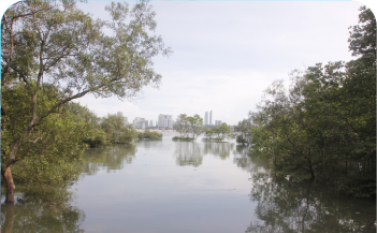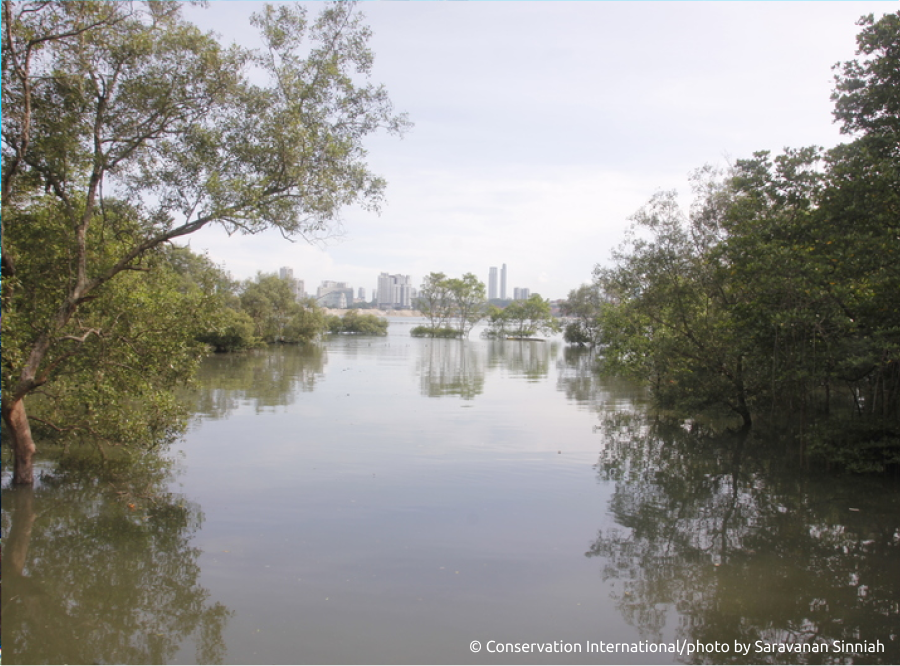Marine and mangrove research and conservation

Url Hash
Components

Mangroves in Singapore are under threat due to the pressures exerted on natural habitats by urbanisation and human population growth. Mangrove forest cover has been reduced from an estimated 13% in the 1820's to only 0.5% of the total land area today. Mangrove forests are now found only in small patches with the largest areas in the northern part of the main island and on Pulau Tekong, Pulau Semakau, and Pulau Ubin.
Pulau Ubin boasts an abundance of biodiversity. It hosts the largest mangrove areas in Singapore and almost all mangrove plant species known to Singapore can be found there, including the rarest species in the world, the 'Eye of the Crocodile'. The National Parks Board (NParks) estimates that the island has over 700 native species of plants, 215 species of birds, over 175 species of butterflies, over 50 species of dragonflies and damselflies, 40 species of reptiles, and 30 species of mammals. Many of these species are very rare and some are not found on mainland Singapore.
The partnership will consider strategies for the effective protection and restoration of biodiversity and carbon rich ecosystems, with a particular interest in coastal or blue carbon ecosystems such as mangroves and seagrass beds.
The partnership also intends to support scientific research in conservation of marine coastal environments, for example, underwater biodiversity assessments and other opportunities to better understand, value and protect Singapore’s national natural capital. An investment in better understanding these natural resources can help to inform decisions on the sustainable use of land and sea.
Stay updated with more Conservation International Asia-Pacific news on how their various conservation efforts have continued to positively impact critical ecosystems, biodiversity and also human well-being around the world.
